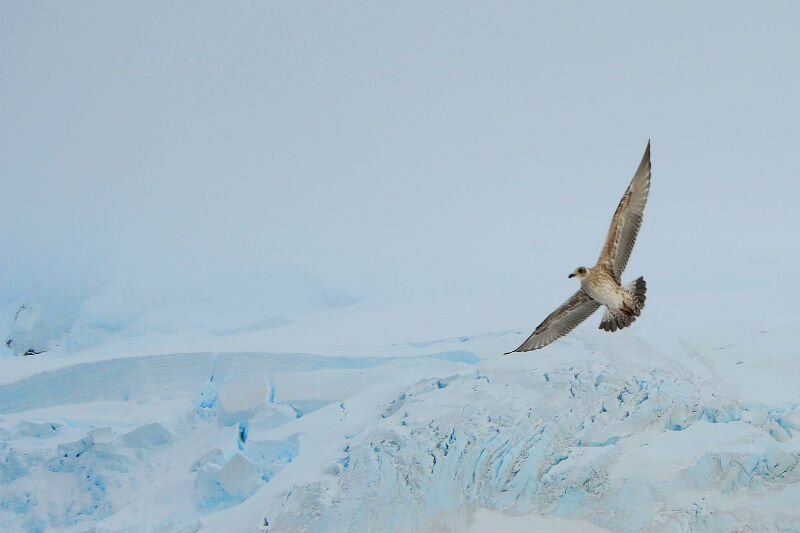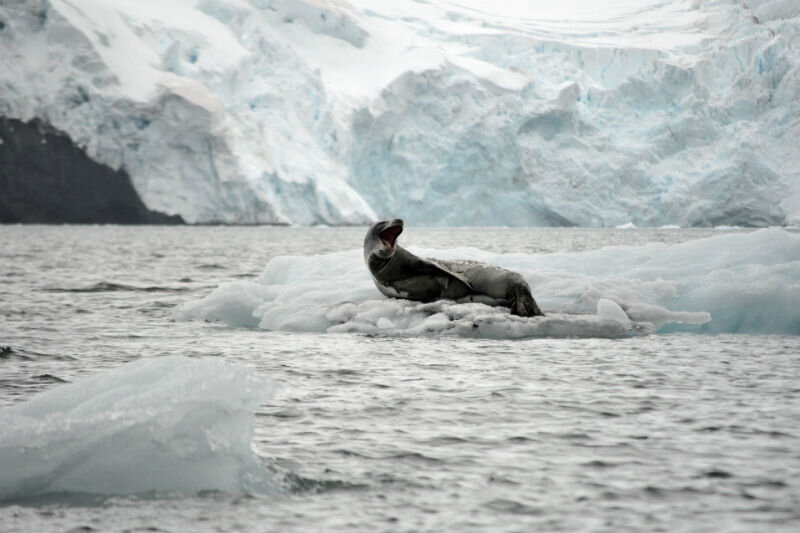As the southernmost continent in the world, Antarctica is a cold, isolated, desert continent that may seem like it does not have much to offer. While the huge ice-covered continent is extremely desolate and nearly uninhabited, Antarctica has much more to offer than meets the eye. For those that venture to the home of the South Pole, there is much to see and experience such as seeing the midnight sun, cruising through icebergs, scuba diving, and most of all, seeing all of the different animals that inhabit this icy desert. Below are some of the best animals that you can expect to see when taking a trip to Antarctica!
Birds
It does not take a professional bird watcher to appreciate seeing different kinds of birds, and while making your way through Antarctica, you are more than likely to see multiple kinds of birds. There are 46 different species that call the desolate Antarctic frontier home, and if you have your personal copy of the “Bird Watcher’s Dictionary” handy, you could potentially identify and check a few interesting birds off of your “bird watching'' bucket list. Aside from the penguin, which is probably the most famous bird in Antarctica, a few of the birds that you will probably see include sheathbills, bitterns, terns, diving petrels, and even albatrosses. These birds can be seen doing a number of things from gliding in the wind, diving into the icy waters, perching on a rock for warmth, scavenging for food near groups of seals or in carcasses, and maybe even calling out to one another if you are lucky. Keep your fingers crossed and your eyes peeled as you tour Antarctica in order to see some of these extraordinary birds.
Penguins
When exploring and viewing different parts of Antarctica, whether by sea or by land, it is likely that you will see at least one penguin. These flightless animals can usually be found in colonies and spend a lot of time on the land and in the water surrounding Antarctica. Not only are penguins a common sight to see when visiting Antarctica, seeing as there are over ten million of them, but there are also different species of penguins that you can see: seven kinds to be exact. The kinds of penguins that you could expect to see when traveling to Antarctica are rockhopper penguins which grow to be only 22 inches tall; macaroni penguins which can grow to be 28 inches tall; king penguins which can grow to be 39 inches tall; gentoo penguins which can grow to be 35 inches tall; Adelie penguins which can grow to be 27 inches tall; chinstrap penguins which can grow to be 28 inches tall; and emperor penguins which can grow to be an impressive 51 inches tall. While you probably will not be able to see all of these penguins in one specific location in Antarctica, you might have better luck seeing them if you keep your eyes on the water because penguins spend nearly 3/4 of their time in the water. On your next Antarctica expedition, make it a goal to see all of the different types of penguins that live there!
Whales
As you cruise through the icy waters of Antarctica, there is a chance that you will get the opportunity to see a whale! There are eight different kinds of whales that explore and feed in the Antarctic waters, and depending on the time of year you visit, you could potentially see one or more of the different species. The whales that call Antarctica home are blues, fins, humpbacks, orcas, minkes, rights, seis, and sperms. These whales range widely in size from the smallest being a minke whale, growing to an average size of only 23 feet, while the blue whale, the largest animal on Earth, can grow up to 100 feet long! The odds of you seeing all of these whales is not extremely likely, but if you visit during the summer months, which is when blues, fins, humpbacks, minkes, rights, seis, and sperm whales can be seen feeding in the Antarctic water before migrating back to their warmer breeding waters, you have a great opportunity of seeing more than one. On the other hand, orcas, which are often called killer whales, do not migrate to Antarctica to feed. Rather, they are in Antarctica almost year-round and if you are patient enough, and have a keen eye, you will probably see an orca or two on your next trip to Antarctica.
Seals
Seals make up a huge population of fauna in the Antarctic region with an estimated 21 million seals living on the continent. This huge population of seals is broken down into six species: Antarctic fur seals, leopard seals, ross seals, weddell seals, crabeater seals, and southern elephant seals. Each of these species of seals is distinctly different and range dramatically in size. The smallest of the seals is the ross seal that caps out at around six feet in length. They are identifiable by their silver belly and by having the biggest eyes of all of the seals in Antarctica. The next smallest is the Antarctic fur seals. Fur seals reach about six-and-a-half feet and are easily recognizable as they are the only ‘eared’ group of seals on the continent. Next up is a seal that is marked with a thin body shape and long snout, this is called a crabeater seal. Despite the name, you won’t see this eight-foot seal chowing down on any crab, but rather using their unique teeth to eat Antarctic krill. The darkest seal of them all is the weddell seal and they can reach a whopping ten feet. Leopard seals, one of the most ferocious predators in Antarctica, are next on the list. Distinguishable by the spots on their chest that give them their name, they can reach up to 11.5 feet and can often be seen hunting a variety of animals, including penguins. The final seal on the list is the southern elephant seal. These beasts tip the scales at a tremendous 6,600 pounds and can reach up to 19 feet long. They are easily identifiable thanks to their huge noses that helped them earn their name. Keep these tips in mind and maybe you will be able to identify all 6 types of seals when you visit Antarctica.
As you can see, Antarctica is home to some amazing animals. Each of the different groups of animals that call Antarctica home, do their own part to make this seemingly barren continent come to life. Let Acanela Expeditions help you book your dream vacation to discover all of the amazing animals that Antarctica has to offer!
Post written by Jaide Matson




